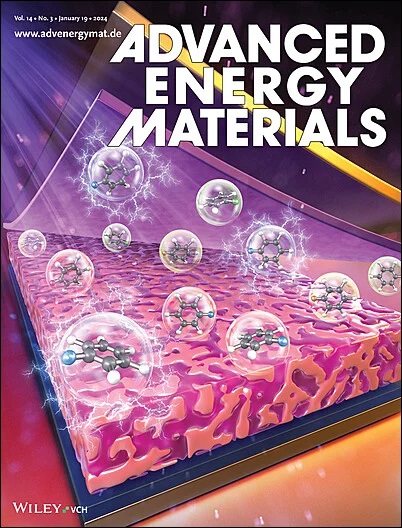Stepwise Screening of Doping Elements for High‐Voltage LiCoO2 via Materials Genome Approach
IF 24.4
1区 材料科学
Q1 CHEMISTRY, PHYSICAL
引用次数: 0
Abstract
Lithium cobalt oxide (LCO), due to its high energy and compacted density, has attracted great interests and become a prevalent cathodes in consumer electronics. Elevating the charging cutoff voltage enables the attainment of higher specific capacity, but irreversible phase transitions and side reactions happened above 4.45 V would cause severe capacity fading in LCO. Although element doping is promising to improve the LCO performance under high voltages, only depending on the trial‐and‐error method for dopant selection is inefficient. Herein, this study examines the feasibility of doping strategies to alleviate the abovementioned high‐voltage LCO issues via materials genome approach combing theoretical calculation and experimental validation. Specifically, a five‐step pruning process is designed for 63 potential elements to evaluate their effectiveness in reducing chemo‐mechanical lattice strain, oxygen release, and cation mixing of LCO during cycling. The final candidates (Sb‐doped LCO/Ge‐doped LCO) are experimentally synthesized, with reduced lattice contraction, less intergranular microcracks, and fewer surface rock‐salt formation in comparison with undoped counterpart, thus exhibiting excellent electrochemical performance. The calculation data obtained from the screening process would benefit for rapid identification of promising dopants and act as a comprehensive map that provides rational guidance to future exploration of multielement doping recipes for high‐voltage LCO.材料基因组法筛选高压LiCoO2掺杂元素
锂钴氧化物(LCO)由于其高能量和致密的密度而引起了人们的极大兴趣,并成为消费电子产品中流行的阴极材料。提高充电截止电压可以获得更高的比容量,但在4.45 V以上发生的不可逆相变和副反应会导致LCO中严重的容量衰退。虽然元素掺杂有望改善高电压下LCO的性能,但仅依靠试错方法来选择掺杂剂是低效的。本研究通过材料基因组的方法,结合理论计算和实验验证,探讨了掺杂策略缓解上述高压LCO问题的可行性。具体来说,我们设计了一个针对63个潜在元素的五步修剪过程,以评估它们在循环过程中减少化学-机械晶格应变、氧释放和LCO阳离子混合的有效性。最终的候选材料(Sb掺杂LCO/Ge掺杂LCO)通过实验合成,与未掺杂的LCO相比,晶格收缩减少,晶间微裂纹减少,表面岩盐形成减少,因此表现出优异的电化学性能。从筛选过程中获得的计算数据将有利于快速识别有前途的掺杂剂,并作为一个全面的地图,为未来探索高压LCO的多元素掺杂配方提供合理的指导。
本文章由计算机程序翻译,如有差异,请以英文原文为准。
求助全文
约1分钟内获得全文
求助全文
来源期刊

Advanced Energy Materials
CHEMISTRY, PHYSICAL-ENERGY & FUELS
CiteScore
41.90
自引率
4.00%
发文量
889
审稿时长
1.4 months
期刊介绍:
Established in 2011, Advanced Energy Materials is an international, interdisciplinary, English-language journal that focuses on materials used in energy harvesting, conversion, and storage. It is regarded as a top-quality journal alongside Advanced Materials, Advanced Functional Materials, and Small.
With a 2022 Impact Factor of 27.8, Advanced Energy Materials is considered a prime source for the best energy-related research. The journal covers a wide range of topics in energy-related research, including organic and inorganic photovoltaics, batteries and supercapacitors, fuel cells, hydrogen generation and storage, thermoelectrics, water splitting and photocatalysis, solar fuels and thermosolar power, magnetocalorics, and piezoelectronics.
The readership of Advanced Energy Materials includes materials scientists, chemists, physicists, and engineers in both academia and industry. The journal is indexed in various databases and collections, such as Advanced Technologies & Aerospace Database, FIZ Karlsruhe, INSPEC (IET), Science Citation Index Expanded, Technology Collection, and Web of Science, among others.
 求助内容:
求助内容: 应助结果提醒方式:
应助结果提醒方式:


